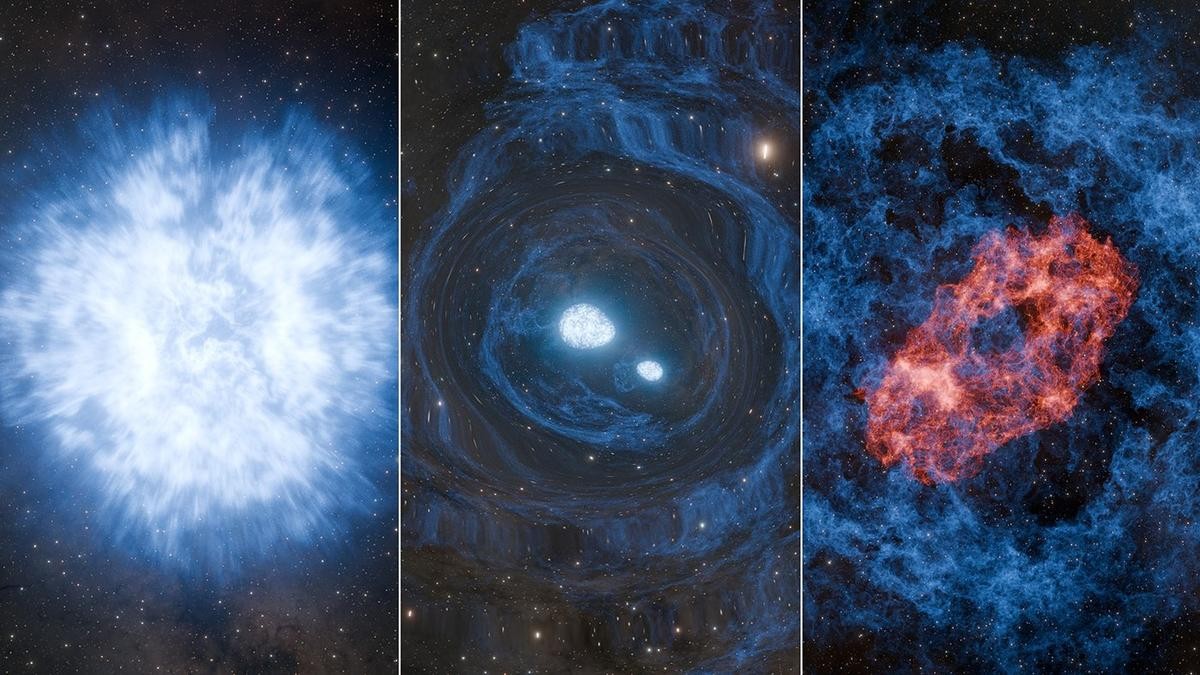Description

Source: Phys.org
Disclaimer: Copyright infringement not intended.
Context
- A research team led by the Hong Kong University of Science and Technology (HKUST) has discovered how carboxysomes—carbon-fixing structures found in some bacteria and algae—work.
- The breakthrough could help scientists redesign and repurpose the structures to enable plants to convert sunlight into more energy, paving the way for improved photosynthesis efficiency, potentially increasing the global food supply and mitigating global warming.
Details
- Carboxysomes are protein-based organelles found in certain bacteria, primarily cyanobacteria, and some chemoautotrophic bacteria.
- They serve as microcompartments for carbon fixation, housing enzymes involved in the conversion of carbon dioxide into organic compounds during photosynthesis or chemosynthesis.
- Carboxysomes are typically polyhedral in shape and consist of a protein shell enclosing enzymes and carbonic anhydrase molecules.
- The outer shell of carboxysomes is composed of various proteins, including hexameric and pentameric proteins forming the facets and vertices of the polyhedral structure.
- Enzymes: The interior of carboxysomes contains enzymes such as ribulose-1,5-bisphosphate carboxylase/oxygenase (RuBisCO), carbonic anhydrase, and carboxysomal carbonic anhydrase (CCA).
Function of Carboxysomes:
- Carbon Fixation: Carboxysomes facilitate the process of carbon fixation by concentrating carbon dioxide around the enzyme RuBisCO, enhancing the efficiency of photosynthesis or chemosynthesis.
- Microcompartmentalization: By sequestering RuBisCO and other enzymes involved in carbon fixation within a confined space, carboxysomes prevent undesirable side reactions and optimize the metabolic pathway.
Biogenesis and Regulation:
- Biogenesis: The assembly of carboxysomes involves the coordinated expression and assembly of various protein components. Specific signals and protein-protein interactions govern their formation.
- Regulation: The number and size of carboxysomes within bacterial cells can vary depending on environmental conditions such as light intensity, carbon dioxide availability, and metabolic demands.
Role in Cyanobacteria and Chemoautotrophic Bacteria:
- Cyanobacteria: Carboxysomes are particularly prevalent in cyanobacteria, where they play a central role in carbon fixation during photosynthesis.
- Chemoautotrophic Bacteria: Some chemoautotrophic bacteria, such as those found in deep-sea hydrothermal vents, also utilize carboxysomes for carbon fixation through chemosynthesis.
Biotechnological Applications:
- Carbon Sequestration: Understanding the structure and function of carboxysomes may inform efforts to engineer plants or microorganisms with enhanced carbon fixation capabilities, potentially aiding in carbon sequestration and mitigating climate change.
- Synthetic Biology: Carboxysomes serve as a model for synthetic biology approaches aiming to construct artificial microcompartments for various biotechnological applications.
About Photosynthesis
- Photosynthesis is the biological process by which green plants, algae, and some bacteria convert light energy, carbon dioxide (CO2), and water (H2O) into glucose (a form of chemical energy) and oxygen (O2).
- Photosynthesis primarily occurs in the chloroplasts of plant cells, specifically in the mesophyll cells of leaves.

Chemical Equation for Photosynthesis:
- The overall equation for photosynthesis is: 6CO2 + 6H2O + light energy → C6H12O6 (glucose) + 6O2
- This equation represents the conversion of carbon dioxide and water into glucose and oxygen using light energy absorbed by chlorophyll.
Steps of Photosynthesis:
- Light-Dependent Reactions (Occurs in Thylakoid Membranes):
- Light Absorption: Chlorophyll molecules in the thylakoid membranes absorb light energy.
- Water Splitting (Photolysis): Light energy splits water molecules into oxygen, protons (H+), and electrons (e-).
- Electron Transport Chain (ETC): Excited electrons move through proteins in the thylakoid membrane, generating ATP (adenosine triphosphate) and NADPH (nicotinamide adenine dinucleotide phosphate) for the Calvin cycle.
- Generation of Oxygen: Oxygen is released as a byproduct of water splitting.
- Calvin Cycle (Occurs in Stroma of Chloroplasts):
- Carbon Fixation: CO2 molecules from the atmosphere are incorporated into a five-carbon compound, ribulose bisphosphate (RuBP), by the enzyme RuBisCO (ribulose-1,5-bisphosphate carboxylase/oxygenase).
- Reduction Phase: ATP and NADPH generated during the light-dependent reactions provide energy and electrons to convert the carbon compounds into glucose.
- Regeneration of RuBP: Remaining molecules in the cycle regenerate RuBP to continue the process.
Factors Affecting Photosynthesis:
- Light Intensity: Higher light intensity increases the rate of photosynthesis until reaching a maximum saturation point.
- Carbon Dioxide Concentration: Increased CO2 levels enhance the rate of photosynthesis until reaching a saturation point.
- Temperature: Photosynthesis rates increase with temperature up to an optimal range, beyond which enzyme denaturation occurs.
- Water Availability: Water shortage can limit photosynthesis by closing stomata and reducing CO2 uptake.
Importance of Photosynthesis:
- Production of Oxygen: Photosynthesis is the primary source of atmospheric oxygen, essential for aerobic respiration in organisms.
- Carbon Fixation: Photosynthesis removes CO2 from the atmosphere, helping regulate the Earth's carbon cycle and mitigate climate change.
- Energy Source: Glucose produced during photosynthesis serves as a source of energy for plants and organisms in the food chain.
Adaptations for Photosynthesis:
- Leaf Structure: Thin, flat leaves with a large surface area maximize light absorption.
- Chloroplast Arrangement: Chloroplasts are concentrated in mesophyll cells near the leaf surface to absorb light efficiently.
- Stomatal Regulation: Stomata allow CO2 uptake and O2 release while minimizing water loss through transpiration.
Photosynthesis in Different Organisms:
- Plants: Photosynthesis occurs primarily in the leaves, with chloroplasts containing chlorophyll pigments.
- Algae: Algae perform photosynthesis in chloroplasts similar to plants but may have different pigments for absorbing light.
- Photosynthetic Bacteria: Some bacteria, such as cyanobacteria, conduct photosynthesis using specialized structures called thylakoids.
Sources:
Phys.org
|
PRACTICE QUESTION
Q. Photosynthesis is a fundamental process that sustains life on Earth. Discuss the mechanism of photosynthesis in various organisms. (150 words)
|














